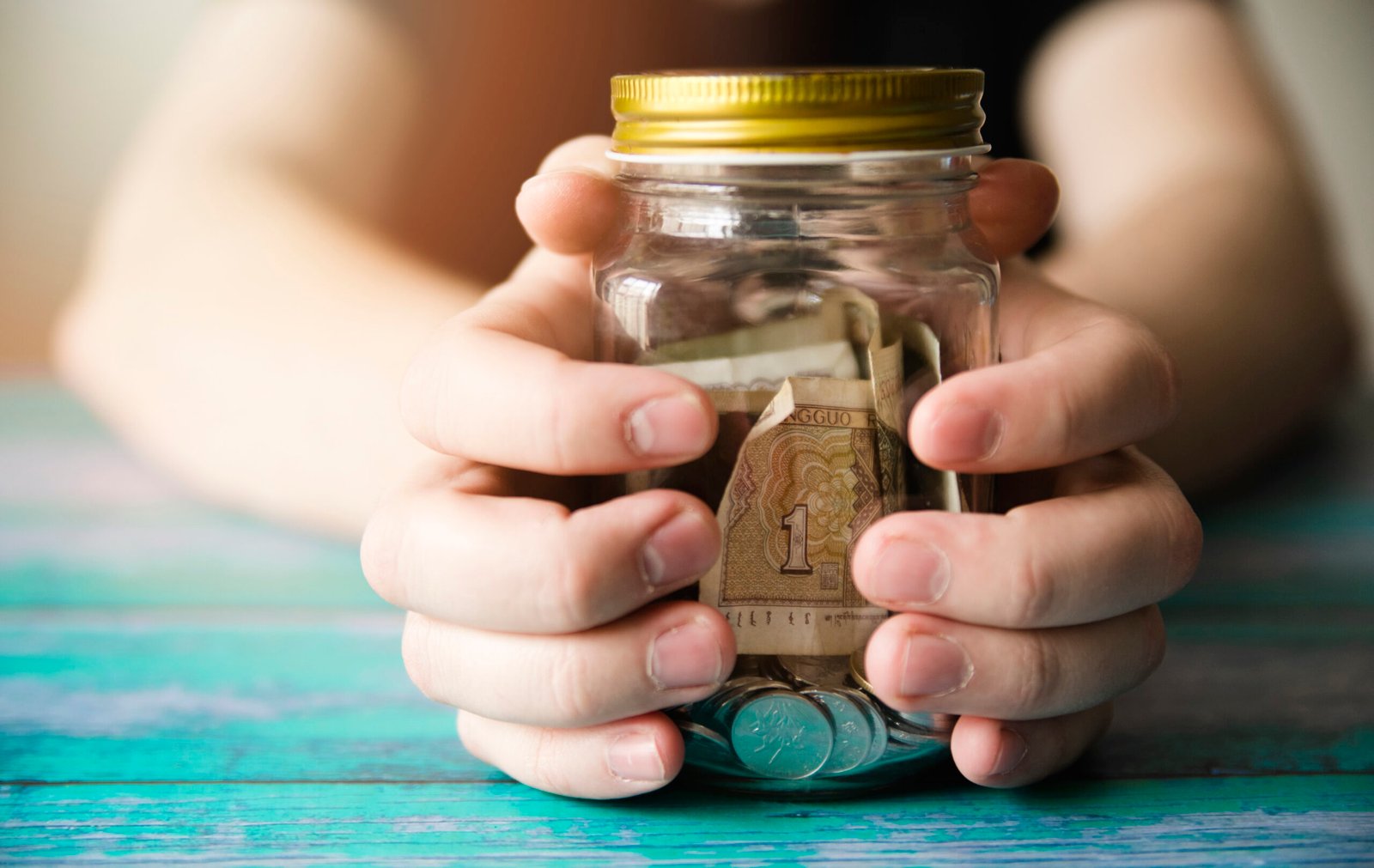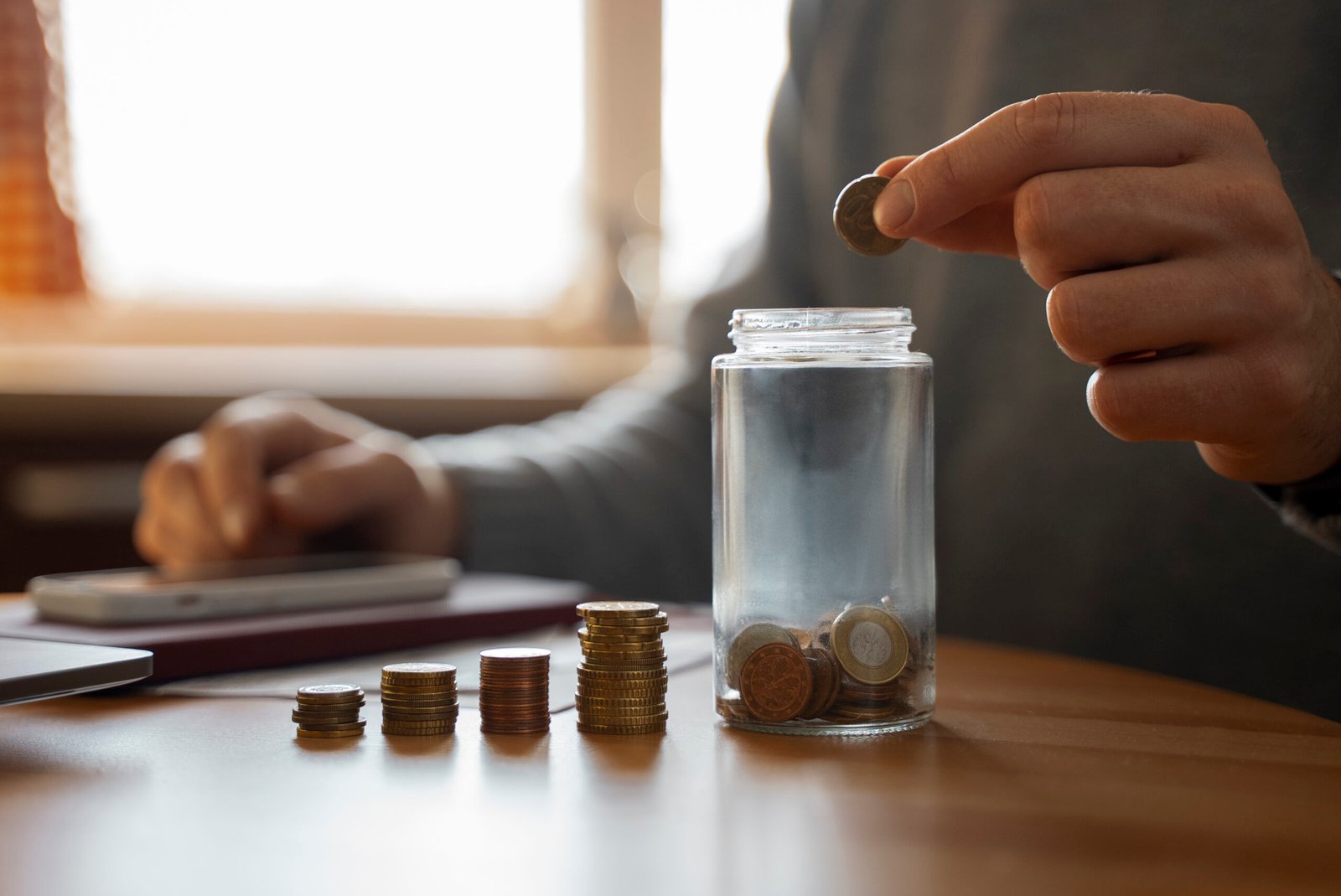This Article will show how to start an Emergency Fund on a Low Income, Why You Need an Emergency Fund, and how to Keep Your Emergency Fund Safe and Accessible. Complete step-by-step guide. Include Advantages and Disadvantages with Frequently Asked Questions and Conclusion.
How to Start an Emergency Fund on a Low Income
Emergency fund savings are probably the single best step towards being financially stable, if you’ve got a shoestring budget. Plans go awry, and you can have some unexpected bills like doctor’s appointments, car repair, or an unexpected layoff that will ruin your finances if you don’t have a plan. All think that saving is to save and that one must earn a lot of money according to business finance principles, but with imagination, discipline, and planning, one can do it even if one’s salary is very low.
Being paycheck to paycheck doesn’t seal your fate to financial tragedy. It just takes more disciplined and careful effort. Rather than stacking huger-than-usual sums of money at once in one spot, the secret is to begin small, be consistent, and automate payments when possible. Having the security that accompanies a nest egg of cash to fall back on is worth the effort alone.
This guidebook is specifically geared toward low-income individuals or those just getting by on scant budgetary means. As a new employee, student, or parent, single parent, debtor repaying debt, or just plain ol’ anybody repaying debt, the following information and advice will help you make those very first steps towards financial security.
Why You Need an Emergency Fund Even on a Low Income
Emergencies always interrupt income. You might be making $1,000 or $10,000 a month and have some unexpected expense blow you out of your means and into hot water. For those who are less financially stable, the magnitude of an emergency will feel larger because you don’t have as much buffer between your budget and being in hot water. So you need to have a buffer.
Having an emergency stash of $300–$500 will keep you from falling back on credit cards, payday loans, or friends. It will help you get by on cash in hand to spend on rent, food, or the price of the bus ticket without significantly weakening your finances. That little buffer space can be the difference between an acceptable loss and a complete disaster.
Saving will look like a load at first, but little by little, here and little by little there will be fine. Cutting back on some of those spontaneous purchases each month, dining out less, or depositing any side cash or bonuses into it will all contribute towards your fund. The mental change from “I don’t have enough to save” to “I don’t have enough not to save” is the secret.
How Much Do I Save in an Emergency Fund?
And maybe the most loosely defined question of all is how much you will have saved in an emergency fund. The old-fashioned rule was 3-6 months’ worth of expenses stashed away, but that might not be possible with low-income families at times. Start small, like $250 or $500, and also try real estate investment and work up from there.
The size of your personal emergency fund will depend on your lifestyle, spending, and dependents. You will have less in target if unmarried and without dependents, with no minimal responsibility. But you’ll need more buffer if you have dependents investing for kids or irregular income.
Tier your target. $500 can be one tier, $1,000 the next, and then 1–3 months of costs that cannot be avoided. Redistribute your objectives every 3–6 months and redistribute that way based on your funds and risk tolerance.
Having a savings plan will make this fantasy a reality. You do not need to wait until you are paid more—saving frequently, a little but often, might be more helpful than waiting for “the perfect time.”
How to Keep Your Emergency Fund Safe and Accessible
The second you start saving your emergency fund, you will need to invest it somewhere accessible but not too accessible that you will end up taking the money out of it to purchase something besides an emergency. Your fund needs to be liquid (to use at one’s whim) and needs to be in a separate account from your everyday checking account.
High-yield savings accounts (HYSAs) are where emergency funds belong. They pay more interest than a savings account and even provide easy access. Internet banks will also tend to give better returns as well as less in fees.
Don’t put your emergency funds in stocks or cryptos. They’re too unpredictable if you don’t know about crypto safety, and sure as heck not going to save your bacon when you need them the most. And don’t leave it in the house in cash if you can avoid it, because it will get stolen or lost.
Label your account “Emergency Fund” so that in your mind, it will not be a temptation to spend it on something else. You can also place restrictions on withdrawals from it or link it to a budgeting app that will track when and why you are withdrawing money from it.
Smart Emergency Fund Places:
- High-yield savings accounts (Ally, Marcus by Goldman Sachs)
- Money market accounts
- Credit union savings accounts
- Prepaid cards with restricted access
- Goal-oriented cyber digital banks
Ways to Establish an Emergency Fund on a Tight Budget
Saving from less is difficult to plan, but not completely impossible. It’s being mindful of expenditure and being able to reduce on saving for basic bare necessities of bills and commitments, as you would for anything else. This chapter provides rough, realistic, and smart housing strategy estimates for starting a fund.
Start with a dollar-by-dollar accounting. If you can track where your dollars are going (financial tools and automation), you can cut the extras. All those little, daily expenses—like unused club memberships or coffee every day—don’t sound so big, but before you know it, they add up to a lot. Reducing monthly expenses, like just $20–$50 per month, can begin to contribute to your emergency fund.
Divide money in wallets or digital wallets to avoid spending sprees and keep the money apart. Convert savings into daily spending and treat yourself first, even if only $5 a week. Save automatically with apps like Chime, Qapital, or Digit because the apps make it easy for you.
Increase more opportunities. Internet freelancing, online surveys, selling online, weekend babysitting, or weekend work are all good, as finance jobs at home. Use bonuses, tax refunds, or cash gifts to fund your emergency fund on its own. The idea is to add the fund slowly but keep your main spending unaffected.
1. Budget All Your Expenses
You have no idea where you are spending money until you save. Behind every dollar lies hidden ways you’re spending it, such as too much eating out or overlooked subscription services you can cancel. Log all income and expenses in software such as Mint, YNAB (You Need A Budget), or even a basic spreadsheet. Once the program plan and analysis are created by the finance commission, you can make more informed decisions about money based on your program for saving.
2. Start with a Micro-Saving Goal First
Don’t do the math with ginormous saving targets. Chill. Start with $100, followed by $250, and then $500. Those small goals are momentum-based and keep you moving. Those small goals get you to save even with your handbag. They create a stashing culture sometimes.
3. Automate Saving Where Possible
Hoarding car-unloads of the saves aside requires willpower to the fore. Set direct deposit or auto-transfer to a second savings account as soon as you get paid. Autotrading accounts like Digit or Chime, which round up miscellaneous transactions or transfer small deposits to savings every day, set up a money-accumulation “set it and forget it” path for your rainy-day fund.
4. Cut the Fat and Save the Money
Take a close look at your spending and see what you can cut or cancel. Can you reduce your cell phone bill to save, have more home meals, or cancel unused memberships? Save that money. Saving $10–$20 per week can amount to hundreds a year.
5. Use Windfalls, Bonuses, and Refunds to Boost Savings
Invest unexpected windfalls—like birthday gifts, tax rebates, or holiday bonuses—in the chance to seed your emergency fund. Since these funds aren’t recurring income, you’re not depriving yourself of your budget by stashing them away. Challenge yourself to save a minimum of 50% (or the whole) of any windfall dollars you acquire before you ever consider what to do with the rest.
6. Start a Side Business or Gig to Supplement Income
If reducing spending isn’t an option, income boosts can start the savings. Experiment with finance careers like part-time employment, freelancing, online sales of your goods or services, or gig economy jobs like food service or online instruction, and more side hustles. Two hours each week is a few hundred dollars each month that could be put on autopilot to go into your emergency fund.
7. Participate in Savings Challenges for Motivation
Be willing to save by doing or being part of a saving challenge. There is even a 52-week savings challenge of saving $1 the first week, $2 the second week, and so on. That is a whole lot more than $1,300 per year. Others use $5 jar challenges or no-spend weekends that are equal if not better, and lots of fun. They make the otherwise dull process fun and keep one in check.
8. Create a Visual Tracker to Monitor Your Progress
Watching you arrive will motivate you even more. Use a savings thermometer, progress meter, or jar to watch how much closer you’re getting to your goal. Every time you put money in, fill out your tracker. Whatever you use, a color page on the fridge or an app widget, these visual reminders support good behavior and remind you of your goal.
Advantages and Disadvantages
Advantages:
- Provides economic stability and peace of mind
- Slash borrowing in times of crisis
- Assists in spending and budget control
- Eliminates tardy fees
- Serves as a means of control and self-assurance facing uncertain circumstances
Disadvantages:
- Eliminates stepwise accretion
- Susceptible to cutting off another source of funding temporarily
- Cognitive dissonance for employment during non-crisis times
- Susceptible to low rates of the conventional savings source
- Requires permanent self-control and self-discipline
FAQs:
Q1. How to save money in case of an emergency with a low income?
Start low at $500 and stretch to 1–3 months of excessive bills.
Q2. What is a real emergency?
Doctor’s emergency, loss of job, car issue, unexpected trip, or fixing a new residence.
Q3. Do I have to empty my emergency fund so that I can save with an interest rate higher than zero?
No. Your emergency fund should be liquid and risk-free. You can, alternatively, utilize savings accounts with higher yields.
Q4. Will you save an emergency fund and become debt-free?
Yes. Save a small emergency fund ($500–$1,000) and then work on debt.
Q5. You can save only $10 per month. Is that sufficient?
That is better than enough! More significant than saving $10 than any large sum at a time! A dollar at a time will be one step towards security!
Conclusion:
Gathering a rainy-day fund on a shoestring budget can sometimes seem like attempting to ascend a mountain too high to climb, but it’s a hill worth climbing. Grunting through methods like saving $5–$10 per week, cutting frills, or working the occasional overtime shift can pay dividends down the line and be pure peace of mind.
It’s not anticipating the most plan but simply to remain faithful to it. If you’re calculating the way money’s flowing in and with the appropriate vehicle of saving, and then you remain faithful to it, then indeed you have some shock absorption which is gonna take care of you against shock in life. There will be crisis—but when crisis days come along, you’ll be ready.
Remember: it’s not what you create, it’s how well you can manage with what you have. Your future self will thank you for the wisdom and discipline that you practice today.
References:
- Consumer Financial Protection Bureau
- NerdWallet – Emergency Fund Basics
- Investopedia – Emergency Fund Guide
- Bankrate – Best High-Yield Savings Accounts









Профильная юридическая служба, специализирующаяся на спорах в сфере автотранспорта. Основная деятельность:
Оспаривание постановлений ГИБДД, МАДИ, АДИ в судах Калининского, Невского, Выборгского районов;
Взыскание ущерба при ДТП на загородных трассах ЛО;
Защита прав водителей при незаконной эвакуации в центре Петербурга.
Работаем с делами на территории всех районов СПб и ЛО с 2018 года. В арсенале: 120+ успешных кейсов по взысканию компенсаций за ремонт. Автоюрист спб
Юридическая поддержка автовладельцев —
команда специалистов с экспертизой.
Ключевые направления:
– Возврат водительских удостоверений и КБМ
– Споры по ОСАГО и досудебное урегулирование ДТП
– Экспертная оценка ремонта
Работаем в районных судах СПб с 2015 года.
Представительство в Московском, Фрунзенском, Приморском районах.
https://avtoyuristsanktpeterburg.ru/
Whether it’s a birthday celebration or a corporate gathering, balloons can create a festive atmosphere. Several local companies offer balloon delivery services, ensuring you can get the perfect decorations when needed.
yacht balloons dubai http://bestwedding-video.com/product-category/yacht-decoration/ .
Is your business ready to grow? I’ll help you collect contacts from local companies to fuel your success. https://telegra.ph/Personalized-Contact-Data-Extraction-from-Google-Maps-10-03 (or telegram: @chamerion)
Business car rentals, with flexible terms.
honda car rental near me https://www.neochorion.com /our-cars/?view=cardetails&carid=9 .